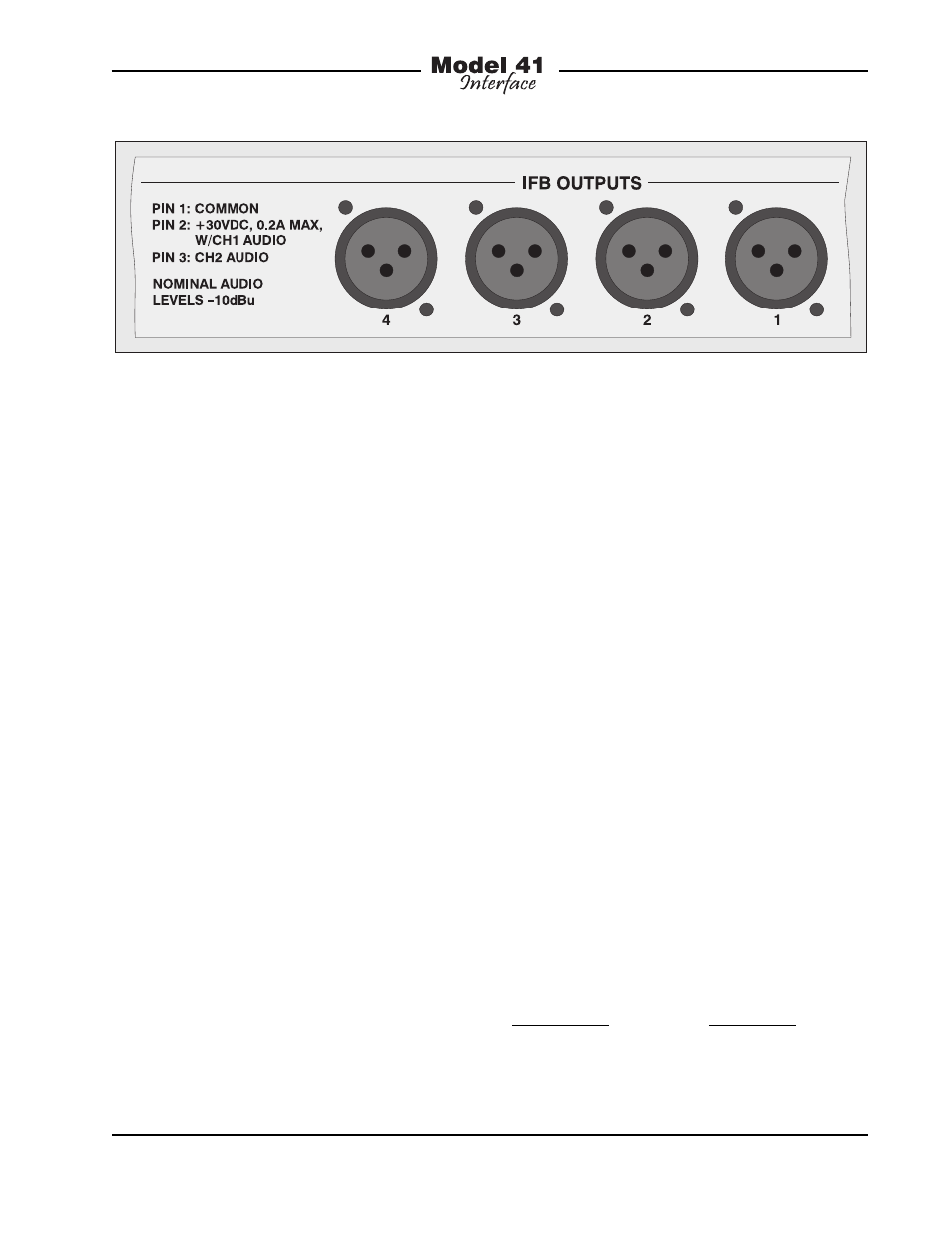Ac mains power – Studio Technologies 41 2004 User Manual
Page 10

Model 41 User Guide
Issue 1, October 2004
Studio Technologies, Inc.
Page 11
can either go only to the XLR connec-
tor shells, or to both the connector shells
and pin 1. Shielding unbalanced audio
signals can be a tricky proposition. It is
recommended that the focus be on using
excellent twisted-pair cable, rather than
worrying about whether or not it is shield-
ed. The typical foil shields used in much
of the contemporary audio cable generally
offers very limited effectiveness. The best
rule to follow is to try to minimize exposure
to large noise sources. (Okay, so that’s
hardly ever practical but at least it’s a
nice dream!)
In the event that very long cable runs are
required, the resistance of the cable can
impact the DC power supplied by the
Model 41. There’s no way to get around
the fact that some DC voltage will be
dropped by the interconnecting cable. A
simple ohms law calculation will tell you
the impact a specific cable run will have.
You’ll need to know the current draw of the
connected device(s), the minimum volt-
age required by the connected device(s),
and the resistance of the cable’s conduc-
tors. This is generally stated as ohms per
1000 feet. Make sure that you account for
the resistance in both the pin 1 and pin 2
legs! In general, if there is the potential for
a cable-length problem, moving to a more
substantial cable gauge, such as 20, 18,
or 16 can be effective.
AC Mains Power
The Model 41 operates directly from AC
mains power of 100 to 230 V, 50/60 Hz.
Being a “universal input” device, there
are no switches to set or jumpers to in-
stall to match a location’s nominal mains
voltage. For locations that have a mains
power source of 240 volts, contact Studio
Technologies for confirmation that a direct
connection can be made.
The Model 41 uses a 3-pin IEC 320 C14-
type inlet connector to mate with a detach-
able mains cord set. For units shipped to
North America and Japan a cord is sup-
plied that has a North-American (NEMA
15L) standard plug on one end and an
IEC 320 C13-type connector on the other.
Units bound for other destinations require
that the appropriate cord set be obtained.
The wire colors in the mains cord must
conform to the internationally recognized
color code and should be terminated
accordingly:
Connection Wire
Color
Neutral (N)
Light Blue
Line (L)
Brown
Earth/Ground (E)
Green/Yellow
Figure 4. Detail of back panel showing IFB circuit output connectors
